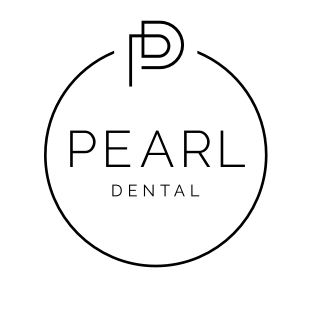A critical component of a beautiful smile and lifelong oral health includes taking great care of not only your teeth, but also your gums. Periodontal treatments and therapies include the prevention, treatment, or management of gum disease, as well as procedures like scaling, root planing, crown lengthening, and frenectomies. We use the latest technology (such as laser treatment) for the highest quality care of periodontal dental treatment in Louisville. We operate an entirely latex-free facility, and sedation dentistry for adults is available for any procedure.
Gingivitis & Periodontal Disease Treatment
Gingivitis is a form of gum disease that can often be reversed through the practice of daily brushing and flossing, in conjunction with regular (twice yearly) dental cleanings. Common signs of gingivitis include gums that are red, puffy, and bleed easily. This form of gum disease does not include any loss of bone or tissue that holds teeth in place. Periodontal disease is the advanced form of gum disease that involves deterioration of the bone and gums, which is the support for our teeth. Some signs and symptoms of periodontal disease include red, puffy gums that bleed easily, bad breath, and radiographic bone loss. With bone and gum loss, there is potential of teeth becoming loose. Treatment for periodontal disease is scaling and root planing (see below).
Scaling, Root Planing, Arestin, & Periodontal Therapy
Scaling and root planing is a cleaning procedure that removes bacteria above and below the gum line. With this procedure, an ultrasonic tip that releases water is used to vibrate plaque and tartar out from under the gums. Hand instruments are also used to remove hardened bacteria from a tooth’s surface. This service often requires local anesthetic. Other therapies used in conjunction with scaling and root planing are laser therapies, locally applied antibiotics (such as Arestin®), and antimicrobial rinses. These therapies assist in decreasing the bacterial load. Learn more about therapies like Arestin® here.
Laser Treatment
At Pearl Dental, we’re proud to use the latest technology for optimal dental care. Lasers, which work by creating energy in the form of light, allow many dental procedures to be performed with minimal noise and pain, and they’re less invasive than conventional surgery. Laser treatments often require little or no anesthetic, and both treatment and recovery times are faster when laser therapies are employed. Lasers can be used for cutting, removing tooth decay, vaporizing or reshaping tissue, or strengthening a bond between a filling and tooth, as well as a heat source for teeth whitening that enhances the effect of tooth-bleaching agents.
Gingivectomies
This procedure is typically performed using a laser to remove a portion of the gum from in and around a tooth or multiple teeth as a treatment for gum disease. These can also be performed to lengthen the height or width of a tooth or a section of teeth.
Frenectomies
A frenectomy is a surgical procedure that loosens or removes a band of muscle tissue connected to the lip, cheek, or floor of the mouth. If this muscle attachment is not removed, it may prevent the tongue from moving freely, create unsightly gaps between teeth, or cause gums to recede from teeth. This procedure is usually performed with a laser under local anesthetic and is accompanied by an easy, unremarkable recovery.
Bone Grafts
Grafts are the replacement or enhancement of the bone near and around a tooth. When a tooth is lost, the surrounding bone collapses. Bone grafts replace, or enhance this bone to facilitate improved oral outcomes, as well as proper support for dental implants or prostheses. Bone grafts can consist of synthetic, bovine, or cadaver materials.
Crown Lengthening
Crown lengthening is a surgical procedure that removes gum tissue and/or bone to expose more of a tooth’s structure and restore the tooth prosthetically.
Soft Tissue Biopsies
To diagnose abnormalities, including growths, lesions, and oral cancer, a sample of the soft tissue from your gums, called a biopsy, must be taken and sent to a lab for analysis. After analysis, Dr. Graves will discuss the results with you and go over your treatment options.
Alveoloplasty
This surgical procedure typically accompanies a tooth extraction and is used to smooth the jawbone in the incident of tooth loss.
Osseous Surgery
When a pocket around a tooth or teeth doesn’t respond to other treatments, osseous surgery is used to smooth and reshape the bone beneath the gum tissue. The surgery makes it more difficult for bacteria to survive in the gum tissue, thus preventing bone damage, bone loss, and lost teeth.
